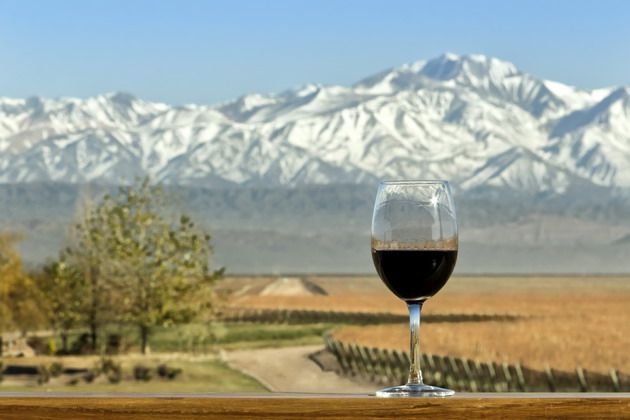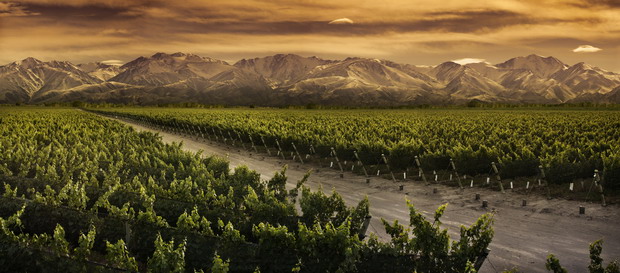“Wine, show me the art of seeing my own history; as if it were already a handful of ashes in memory.”
– Jorge Luis Borges, 1964
By Greg Hughes
April 17th is International Malbec Day and in Ottawa it was celebrated at the residence of the Argentine ambassador to Canada, Her Excellency Norma Nacimbene de Dumont.
The mood was cheerful for the lucky twenty individuals invited to share this special day sipping wine and eating empanadas with Her Excellency in her home. There was special cause for excitement. This was the first Malbec Day to be celebrated for half a decade in Ottawa.
Though Argentina has been making wine longer than many other regions in the Americas, both Canada and Argentina share a status that is less established or understood in the minds of the average consumer.
Gaining traction in global markets often begins by reinventing the way wine lovers look at a cherished style. Argentine Malbec is an essential staple of any restaurant’s wine list. Moreover, Argentina has recently become the fifth largest wine exporting country.
Malbec was plucked from along the Lot river in Southwestern France and brought to the Uco valley in the late nineteenth century. It thrived. Malbec is now more commonly associated with Argentina than its home, Cahors, in France.
“Malbec Day” is deceptive. Are we only celebrating the grape and not the efforts of the vignerons who toiled to make it something special?
We celebrate Malbec Day because it is a glimmering example of winemaking success demonstrated through Argentina’s maturity as a wine producing nation.
Here, I’ll provide a glimpse at two wines I had the pleasure of enjoying for Malbec Day, 2016:
This wine is the collaborative project of some of the most prestigious houses in Bordeaux in orchestration with Michel Rolland. Some of the more recognizable contributors also own Chateau Clarke, Chateau Le Crock, and Leoville Poyferre. This wine is predominantly Malbec with Cabernet Sauvignon, Merlot, and Syrah in support.
Beautiful colour. Lots of garnet hues. Aromas of caramel, dried herb, damson plum, cassis, cigar smoke, worn leather, and bramble with leaf. Flavours show off a sophisticated rusticity. Dusty tannins. Smoke, sage, fennel, and licorice. Fruit are quite soft and supple (lots of tertiary age notes already). Stewed plum, jammy blackberry and currant. The oak integration is superb. This wine is meticulously crafted.
Michel Torino Ciclos Malbec Merlot 2011
Ciclos’s Malbec Merlot blend is a favourite of Ambassador Nacimbene de Dumont. This wine is not currently available in Ontario, but it makes an excellent case for a lesser known region for Malbec in Argentina – Cafayate.
The colour is a rather deep, ruminating violet-purple. Aromas of damson plum, kirsch, tobacco, anise, cardamom, hothouse flower, and bramble. There is a surprising liveliness to the acidity that helps to carry the full flavours and high alcohol. Cassis, damson, tobacco, brown spice, blackberry. Glycerol mouthfeel.
Cafayate lies within the Salta province, in the north. This desert plateau holds the record for highest elevation above sea-level of any wine production area on the planet. Day-night temperature swings (diurnal variation) preserve aromatics and acidity, sunlight intensely ripens the grapes, and depleted soils stress the vines to produce extra concentrated grapes.
It is more common to find aromatic whites grown here, but reds remain full bodied yet fresh.
Argentine wine is more than only Malbec, however. In the shadow of Malbec’s success we sometimes overlook the tremendous range Argentine wine can deliver. Altitude variation affects the sun exposure and temperature gradient of vineyards. The topography dramatically changes north to south.
At extreme vineyard altitudes in Salta are some of the world’s finest examples of Torrontés – an obscure varietal whose origins stretch back to the beginning of viticulture in the Andes.
Sun-baked southern Patagonia vineyards produce a wide range of styles, but are probably best known for high quality Pinot Noir.
April 17th is not just about recognizing Malbec. It is more important we recognize the passion and talent of Argentine vignerons alongside the nation’s many other contributions to art.
I would like to express my gratitude to Her Excellency for her hospitality. Thank you for considering me worthy of inclusion and for inviting all of us into your home.
Thank you to Franco Senillani and María Cristina Mattiolo for helping to organize a lovely evening. I enjoyed speaking with you both.
I also would like to honour Alejandro A. Basualdo: for endeavouring to make wines worthy of celebration on this day, and who obligingly answered all my questions.
Greg M. P. Hughes
FWS/ Hon. Hist.










